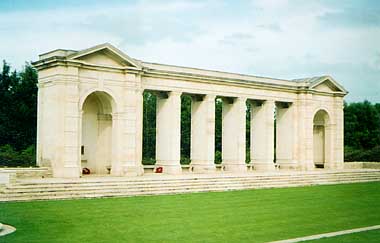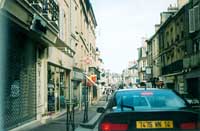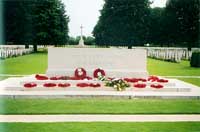|
 ORMANDIE,
as the signposts say when on French roads, is not a bad choice for
a weekend drive when in the country. The centre of D-Day celebrations
this weekend, it can be reached by car over several hours from Paris,
avoiding the autoroutes if necessary. It can be one of the
most beautiful drives in the French countryside—and you won’t need
to wake at a ridiculously early hour, either. ORMANDIE,
as the signposts say when on French roads, is not a bad choice for
a weekend drive when in the country. The centre of D-Day celebrations
this weekend, it can be reached by car over several hours from Paris,
avoiding the autoroutes if necessary. It can be one of the
most beautiful drives in the French countryside—and you won’t need
to wake at a ridiculously early hour, either.
Unlike a drive I took from the Riviera to Bourgogne,
the French country roads—the old routes nationales—from Paris
to Caen in the Normandie region can be quicker and more scenic.
Setting out from Paris on the E05, I followed the signs to Évreux,
taking me on to the N13.
Despite its proximity to Paris, the country towns
along the N13 are a throwback to what Allied troops could have seen
60 years ago, not long after the landings. I stopped at a service
station and chatted with an elderly woman, who had come out to help
pump the diesel into my Opel Astra.
We briefly chatted and we had agreed how much
superior a drive in the countryside was to the blandness of the
autoroute, and the many toll stations that appeared along the way.
I don’t mind the péages, but there’s only so much
of the concrete one can take.
The city of Caen is the largest in the region,
and it is after here that one begins to spot signs for historical
locations that formed part of the Allied invasion on June 6, 1944.
Caen, however, does not show that many signs of D-Day-related tourism.
It is the next town along the N13, Bayeux, that is more notable.
Historically, it was the first town liberated after D-Day, or Jour-J
as the French say.
Bayeux’s famous Notre Dame Cathedral, consecrated
in 1077, survived the bombings of World War II unscathed. There
is a €4 cover charge to
enter this remarkable building, which had been added to between
the thirteenth and fifteenth centuries. Most famous for the Bayeux
Tapestry, a 70 m long embroidery
depicting events leading up to the Battle of Hastings in 1066, Bayeux
has become quite touristique. Across the road from the Cathedral
is a tobacconist that sells postcards. The cafés seem more
citified than those in Paris, those nearest the Cathedral charging
prices that one would find in the capital. As to accommodation,
expect to pay a premium for this part of France.
I decided it would be more worthwhile to head
closer to Omaha Beach, where the first wave of the Allied invasion
took place. First, I had to get past a small traffic jam that had
built up in this town—quite a surprise, but then again, it
was a sunny day.
It was on this leg of my journey that the numerous
cemeteries for Allied soldiers began appearing on both sides of
the road.
There were probably 5,000 Allied, and close to
9,000 German, deaths, on D-Day, and I began to able to quantify
the unbelievable human cost of the battle. British and Empire cemeteries
appeared outside Bayeux. Even though this was some time before this
weekend’s 60th anniversary commemorations, dozens of poppy wreaths
were placed at one memorial. Seemingly endless numbers of white
headstones, carrying symbols of the Royal Navy or the British Army,
lay in an immaculately kept field. Somehow I sensed that I should
not cry for these men, many of whom lay in unnamed graves, reading
‘A Sailor in the Second World War’ or similar legends. I had expected
some reaction from imagining stories of those who did not make it
home. Despite feeling greatly saddened at the human loss, the gravestones
seemed to suggest that I should honour them with my personal strength,
and to commemorate them in my own way. Perhaps writing about them
is that way. The situation among my people in China, where World
War II casualties topped 35 million, meant that not everyone was
fortunate enough to have had proper memorials, especially in genocidal
massacres carried out by the Japanese Army.
I drove toward Omaha Beach, clearly marked as
I drove toward the Normandie coast. I did not need maps by this
point, not just because of the signage. I had an inkling where the
English Channel was and headed straight for it.
CONTINUED


|
I drove toward Omaha Beach.
I did not need maps by this point. I had an inkling where the English
Channel was and headed straight for it



TOP: Notre Dame
Cathedral in Bayeux, home of the Bayeux Tapestry and the first town
liberated by the Allies after D-Day. ABOVE,
FROM TOP: Traffic jam in Bayeux. Close-up of monument for British
and Empire troops. On the other side of the road, a memorial to
British and Empire soldiers reading, ‘Their name liveth for
evermore,’ in immaculately kept grounds. BELOW
LEFT: British and Empire war memorial in marble.
|

